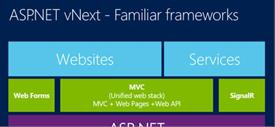Customer Service Processes: The Go-Getter’s Guide for Success
It’s a common misconception that customer service and customer support are just two different terms for the same job.
There is an essential difference, among other disparities, that separates the two forms of customer relations. Customer support aims to provide a service that centers on the goods your company provides or the company itself. On the other side, customer service agents are utterly user-oriented, with the primary goal to create a flawless user experience.
The importance of user experience for successful customer retention, business, and revenue growth can't be overstated, poor customer experience drives away an existing customer and it leads to the risk of losing prospects due to poor public feedback or word to mouth. Therefore, here is a guide that should lead you through the development of the most efficient customer service process.
Automation
The bedrock of quality service is the fast and effective resolution of customers’ concerns. Think about a college student that needs to deliver an essay in a short timeframe. The student wants to see a quick resolution of potential issues; that's what drives the decision-making process that ultimately leads the client to Edugeeksclub or some other service. Therefore, from the moment the client feels the need to seek help, you should have a system that will allow them to find a proper answer as fast as possible.
There are a series of customer relationship management and HR software and incident management system to reduce the amount of manual labor and facilitate the work of customer service agents. When combined, these two software solutions allow you to categorize the issue and delegate it to the proper address. Furthermore, these automation tools allow data analysis and usually feature means to enhance and develop your process following the needs of your clients. This is also the most effective and cost-efficient method if your business provides multiple contact channels, such as social media, phone, email, live chat, or ticket service. The automation software gathers data from all available sources and shows them within a single dashboard in a manner that works best for you.
Customer service process layout
Whether you decide for automation tools or prefer fully manual handling of the client concerns, you need to have a clear layout that encompasses all the necessary elements of your customer service process.
Establish communication channels
The first order of business is to determine which channels your customers use to communicate. Per example, you could include social networks, emails, phones, website, or any other method that your brand provides. With all of the contact options under your surveillance, you will avoid overseeing incoming requests, widely known as “cases”.
Setup case processing routine
Next, you should breakdown the process handling of each case. You should create a step-by-step procedure that your employees or the automation software will follow to reach a solution that will keep the customer satisfied with your brand, and potentially make space for upselling.
Categorization
Each customer complaint should belong to a certain category that falls under the responsibility of a dedicated agent. Depending on the volume of your business, one agent could deal with several categories.
Seeking the solution
When the case arrives at the appointed customer service agent, your representative should have the means to find a quality solution. The best practice is to provide a knowledge base that your people can look into and solve the problem. If the solution is beyond the capabilities or responsibility, there should be a procedure that allows the customer service agent to push the problem upstairs to a superior.
Solution delivery
When you have the proper answer for your complainant, you need a method of delivery. The best choice would be to use the same channel from which the ticket arrived, or have the customer choose the optimal method of delivery. According to studies, phone accounts for more than two-thirds of interaction. If the customer is not happy with your answer, the agent should ask for feedback that explains which aspects of your solutions are not satisfactory and get back to seeking the solution.
Closing the case
Once your customer service delivers the answer that settles the issue, the case closes, and your employee delivers a report that you can use to further improve the quality of your service. The report should include some standard metrics, as well as the description of the provided solution to enrich the existing knowledge base.
- Here are some metrics that you should take into account:
- What kind of concerns mostly trouble your customers
- What channels customers mostly use for contact
- The list of recurring complainants
- The list of recurring satisfying answers as well as solutions that most often fail to resolve customer complaints
- Average time from the moment of the client's initial contact to closing the case
These indicators are not set in stone, you can add or remove metrics as your business requires. Each industry has its dynamics and common categories of complaints, which is why the personalization of recorded metrics is rather welcome.
Conclusion
We hope this article showed you some useful pointers that will help you provide an outstanding quality of customer service. Remember that the employee training and a continuously updated knowledge base are the engines that drive your process forward. Without skilled professionals at your side, you could develop the most enhanced process and still fail to deliver a high standard of services.
Related Posts
Blackmail is a serious crime that can cause immense stress and fear.
In today's data-driven world, databases form the backbone of countless applications and systems that power businesses across industries.
It’s no longer a hidden fact that social media platforms like Facebook affect the mental health of users.
Relocating an IT company is a significant endeavor that involves careful planning, coordination, and execution.
Today maintaining office security has become an important concern for businesses of all sizes.
A registered office address is a fundamental requirement for any business entity, whether it’s a corporation, limited liability company (LLC), or partnership.













Comments
comments powered by Disqus